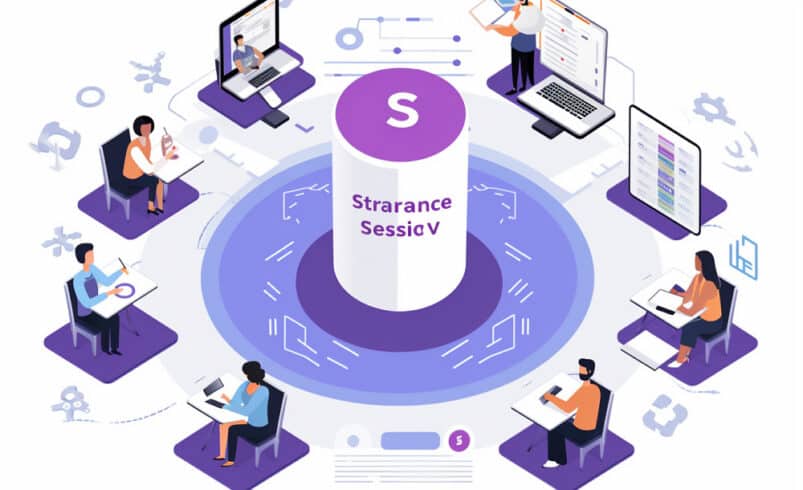A Guide To Smart Contract Testing: All You Need To Know

Table of Contents
Smart Contract Testing Explained
Smart contract testing refers to the process of systematically evaluating and verifying the performance, security, and usefulness of self-executing agreements directly integrated into a blockchain code. This thorough approach is critical in the development lifecycle of smart contracts, ensuring their accuracy, robustness, and reliability.
Benefits Of Smart Contract Testing
Smart contracts are critical components of decentralized applications (DApps) and blockchain. Smart contract testing is crucial because it can uncover and fix security flaws in the code.
A thorough testing strategy is an essential barrier against potential exploits such as reentrancy attacks and unauthorized access. Given that smart contracts commonly handle sensitive data and valuable assets, testing is critical for protecting users and their assets.
Testing guarantees that smart contracts carry out their intended functions precisely. Functional testing ensures that the smart contract performs as intended under various conditions.
It helps detect and rectify logic errors, ensuring that contract obligations are correctly implemented. Furthermore, testing helps to maintain a well-structured code that follows best practices and is supported by detailed documentation.
This improves the overall quality of the code, making it less likely to introduce problems during future revisions and easier to maintain. In decentralized ecosystems, smart contracts frequently interact with protocols, extra smart contracts, and external services.
Thus, testing ensures interoperability, ensuring that the smart contract fits seamlessly into the more extensive network and interacts effectively with other components. Testing also addresses compliance with regulatory criteria.
Testing guarantees that the smart contract is in accordance with applicable rules and regulations by discovering and addressing potential compliance concerns.
Who Can Conduct Smart Contract Testing?
Smart contracts are tested collaboratively by a team of specialists, which includes quality assurance (QA) engineers and blockchain developers. Blockchain developers are essential throughout the coding and initial testing phases since they are skilled in programming languages.
The QA engineers undertake extensive testing, focusing on critical issues such as functionality, security, and performance. Their expertise includes blockchain technology and smart contract features.
Furthermore, smart contract auditors, who are well-versed in blockchain security protocols and vulnerabilities, may be called upon to provide specialized security assessments. These positions often require a strong background in software development, knowledge of blockchain technology, and a complete understanding of best practices for smart contract development.
Types Of Smart Contract Testing
Integration Testing
Integration testing is concerned with ensuring that the various components of a smart contract work together seamlessly. This form of testing confirms that the multiple components of a smart contract work in accordance with the established strategy.
Unit Testing
Unit testing examines individual methods or functions within a smart contract to ensure that they work as intended. This thorough procedure guarantees that each function works as planned and assists in identifying and resolving any flaws in specific areas of the code.
Security Audits
Security audits entail a thorough study of the smart contract code to find flaws and other security risks. This comprehensive approach is critical for ensuring that the smart contract is resistant to common attacks such as reentrancy, overflow, and unauthorized access, hence avoiding security flaws.
Functional Testing
Functional testing evaluates the entire functionality of a smart contract. Its goal is to ensure that the smart contract fits the requirements and adequately executes the desired operations.
Performance Testing
Performance testing gauges the smart contract’s scalability, throughput, and responsiveness across numerous situations. This form of testing helps to measure transaction speed, identify logjams, and ensure that the smart contract can manage the predicted demand.
Gas Consumption Testing
Gas consumption testing calculates smart contract gas requirements. Transaction profitability and blockchain platform code optimization are the main goals of this testing.
Code Review
Qualified developers manually or automatically examine smart contract codes. Implementing coding standards and best practices, finding errors, and improving code quality are the goals.
Regression Testing
Regression testing prevents smart contract upgrades from breaking functionality or introducing issues. This testing maintains smart contract reliability as it evolves.
Usability Testing
Usability testing evaluates smart contract usability based on interface clarity and interaction ease. This testing ensures that smart contract users may engage without unnecessary hurdles, providing a smooth user experience.
How To Set Up A Testing Ecosystem
Step 1: Select A Blockchain Platform
The first step in testing is choosing a blockchain platform. The platform used depends on the consensus method, programming language comfort, and blockchain type. BNB Smart Chain, Ethereum, and Hyperledger Fabric are prominent testing platforms worth considering.
Step 2: Install A Compatible Software
Installing software and tools is next. This covers blockchain node software, IDEs, and development frameworks. Installing Go or .NET Ethereum clients like Geth or Nethermind may be necessary.
However, Hyperledger Fabric requires Composer or Fabric SDK installation. Remix for Ethereum smart contracts and Hyperledger Caliper for benchmarking are other excellent options.
Step 3: Set Up Test Network
Configure blockchain platform-specific test networks after installing the software. Building a local or private blockchain network simplifies testing. You can explore programs like Ganache to create an Ethereum-only network.
This includes constructing the network’s key components: peers, which host ledgers and smart contracts; orderers, who order transactions into blocks. The channels allow private transactions and ledgers among a group of network members.
Ending Thoughts
Failure to test smart contracts increases the risk of security and functionality issues. Unexpected failures or coding flaws can affect smart contract functionality and other blockchain-based systems or decentralized apps.
Moreover, smart contracts with insufficient testing are vulnerable to security issues that unscrupulous actors can exploit.
Time Crypto Market offers content visibility for dozens of crypto enterprises, and you can be a part of our network! Reach out to us on our telegram chat for inquiries. The nature of cryptocurrencies is highly unpredictable; always perform your due diligence before any investment. Several articles on our site come from guest contributors or are commissioned pieces, not originating from Time Crypto Market's in-house writers. The perspectives shared in these articles might not necessarily align with those of Time Crypto Market. We do not assume responsibility for the veracity, caliber, promotions, offerings, or any other elements presented on our platform. Consult our comprehensive terms of service and disclaimer for more details.








